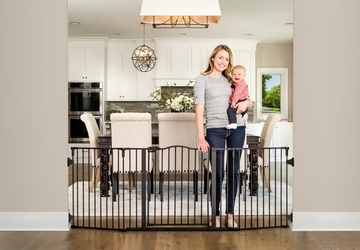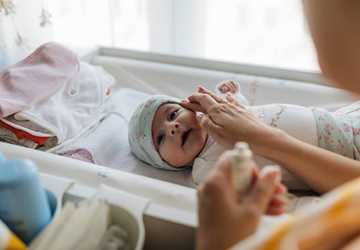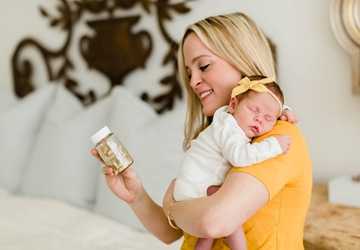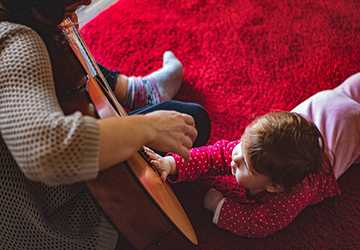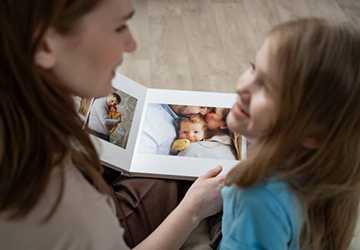How to Set Up an Eco-Friendly Nursery: Sustainable Choices
Bringing a new baby into the world is an exciting and joyous occasion, but it also comes with responsibilities, including making sustainable choices. Setting up an eco-friendly nursery is not only a positive step for the environment but also provides a healthy and nurturing space for your little one. From furniture to decor and everyday essentials, there are numerous ways to create a nursery that promotes sustainability. In this article, we will explore various ways to set up an eco-friendly nursery with sustainable choices.
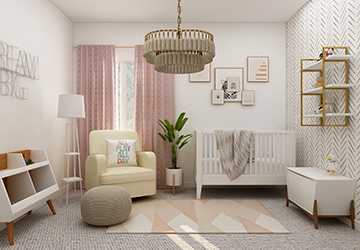
Start with a Sustainable Foundation
The first step in creating an eco-friendly nursery is selecting sustainable and non-toxic materials for the nursery's foundation, including the flooring and walls. Opt for natural and non-toxic flooring options like bamboo or cork. These materials are not only renewable but also emit fewer volatile organic compounds (VOCs) than traditional carpet or hardwood.
When painting the nursery walls, choose non-toxic, low-VOC, or VOC-free paints. These paints are better for air quality and your baby's health. Look for eco-friendly paint brands that offer a wide range of colours to achieve the desired aesthetic while being environmentally conscious.
Choose Eco-Friendly Furniture
The furniture you select for your nursery is vital in creating a sustainable space. Opt for furniture made from sustainably sourced wood or recycled materials. Look for certifications such as FSC (Forest Stewardship Council) to ensure that the wood used in the furniture is responsibly harvested.
Consider multi-functional furniture pieces, such as cribs that can be converted into toddler beds and dressers that can serve as changing tables. This not only reduces waste but also allows the furniture to grow with your child.
Go for Non-Toxic Bedding
The crib is the nursery's centrepiece, and the bedding you choose can impact your baby's health and the environment. Avoid bedding made from synthetic materials or treated with harmful chemicals. Opt for organic cotton, hemp, or bamboo bedding, which is soft, breathable, and free from toxic chemicals.
Ensure the crib mattress is made from natural materials and is free from toxic flame retardants. Look for certifications like GOTS (Global Organic Textile Standard) and GREENGUARD to ensure that the bedding and mattress meet eco-friendly and health standards.
Sustainable Lighting
Proper lighting is essential in a nursery, but it's vital to choose energy-efficient options. Select LED bulbs, which last longer and use less energy than traditional incandescent bulbs. Use dimmer switches to control the brightness and create a soothing atmosphere.
Consider using natural light during the day, as it's both energy-efficient and beneficial for your baby's circadian rhythm. Use curtains or blinds made from organic or sustainable materials to regulate the light entering the room.
Eco-Friendly Decor
Decorating the nursery is an opportunity to infuse your personality and values into the space. Opt for eco-friendly decor items, such as wall art made from reclaimed wood or prints on recycled paper. Choose non-toxic and water-based adhesives to hang decorations and avoid vinyl wall decals that can release harmful chemicals.
Plants are an excellent addition to an eco-friendly nursery. They not only improve indoor air quality but also add a natural and calming element to the room. Select easy-to-care-for indoor plants like snake plants or pothos, and place them out of your baby's reach.
Responsible Storage Solutions
A well-organized nursery is essential for both functionality and aesthetics. Instead of using plastic storage bins, consider eco-friendly options like woven baskets made from natural materials, wooden shelves, or metal storage containers. These alternatives are durable and sustainable, and they help reduce plastic waste.
Label your storage solutions with eco-friendly options using reusable chalkboard labels or wooden tags. This not only adds a personal touch but also reduces the need for disposable labelling materials.
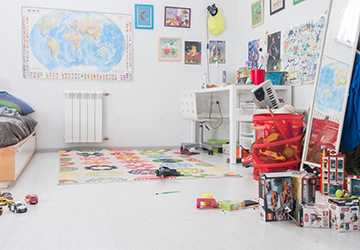
Cloth Diapers and Accessories
One of the most significant environmental impacts in a nursery is using disposable diapers. Consider using cloth diapers and reusable cloth wipes. Cloth diapers, while requiring more upfront effort, are a much more sustainable option. They reduce the volume of waste sent to landfills and save a significant amount of money over time.
To store dirty cloth diapers, use a diaper pail with a reusable liner or a wet bag. You can also use cloth diaper-friendly detergents that are biodegradable and free from harsh chemicals.
Green Cleaning Products
Keeping your nursery clean and safe for your baby is essential, but it's equally important to choose eco-friendly cleaning products. Avoid harsh chemicals and opt for natural, non-toxic cleaning solutions. Many eco-friendly brands offer products designed explicitly for baby-related messes. Alternatively, you can create cleaning solutions using simple ingredients like vinegar, baking soda, and essential oils.
Sustainable Toys and Baby Gear
As your baby grows, they will interact with various toys and baby gear. Opt for toys made from sustainable materials such as wood, organic cotton, or recycled plastics. Look for toys that are free from harmful chemicals and dyes. Also, choose items that grow with your child to minimize waste.
Regarding baby gear like strollers and car seats, look for options built to last and can be converted or adjusted as your baby grows. Many brands now offer sustainable baby gear made from recycled materials and designed for longevity.
Second-Hand and Hand-Me-Downs
Consider the environmental impact of every purchase you make for the nursery. Instead of buying everything brand new, explore second-hand and hand-me-down options. Friends and family may have items in good condition, and thrift stores or online marketplaces can be excellent sources for gently used baby gear and furniture. By choosing second-hand items, you reduce the demand for new manufacturing and lessen the environmental footprint of your nursery.
Conclusion:
Creating an eco-friendly nursery is not just a trend; it's a responsible choice that benefits your baby and the environment. By making sustainable choices regarding flooring, furniture, bedding, lighting, decor, storage solutions, and baby-related products, you can create a nurturing and environmentally friendly space for your little one.
Every decision you make in setting up your nursery, from the crib mattress to the cleaning products, can contribute to a more sustainable and healthier environment for your child. By taking these steps, you're not only giving your baby the best start in life but also leaving a positive impact on the world they will inherit.
